Introduction
Liquefied hydrocarbon storage is a critical component in petrochemical and industrial operations. Sphere tanks, commonly used for storing liquefied hydrocarbons like propane, butane, and LPG, require strict monitoring systems to ensure safe and efficient operation. Among these monitoring tools, local level indicators play an essential role in complementing remote monitoring systems and providing crucial real-time data to operators.
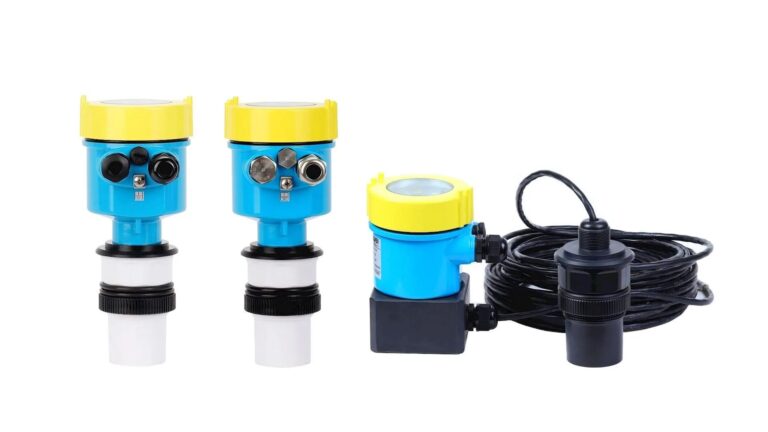
Why Local Level Indicators Are Necessary
Several key reasons justify the inclusion of local level indicators in liquefied hydrocarbon sphere tanks:
1. Compliance with Safety Regulations
Many industrial safety regulations and standards mandate the presence of reliable level monitoring systems for hazardous chemical storage. Regulatory frameworks such as:
GB 50160-2008 (Code for Fire Protection Design of Petrochemical Enterprises)
SH/T 3178-2013 (Safety Technical Regulations for LPG Storage Tanks)
NFPA 58 (Liquefied Petroleum Gas Code)
These guidelines emphasize the importance of maintaining liquid level control to prevent overflow, potential leaks, and system failures. Local level indicators provide redundancy to ensure compliance with these safety requirements.
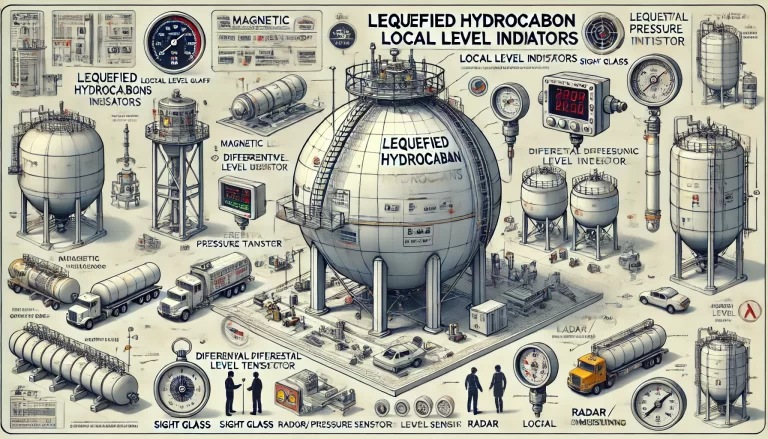
2. Ensuring Operational Safety
Liquefied hydrocarbons are highly volatile substances that require strict level control. Overfilling can cause excessive pressure build-up, while low levels may lead to pump cavitation or system malfunctions. Local level indicators provide:
Immediate visual confirmation of liquid levels
A backup system in case of DCS (Distributed Control System) failure
Quick access for on-site operators to verify readings without relying solely on remote instruments
3. Backup for Remote Level Monitoring Systems
While modern sphere tanks often incorporate remote level transmitters such as radar, ultrasonic, or differential pressure sensors, these systems are not immune to failures due to:
Power outages
Communication failures
Instrument calibration errors
In such situations, local level indicators act as an essential manual verification tool.
4. Assisting in Maintenance and Emergency Situations
During maintenance, repair, or emergency operations, having a visible, easy-to-read local level indicator allows technicians to:
Confirm liquid levels before conducting maintenance activities
Assess levels in case of electronic system malfunctions
Ensure proper shutdown and start-up procedures without relying solely on remote systems
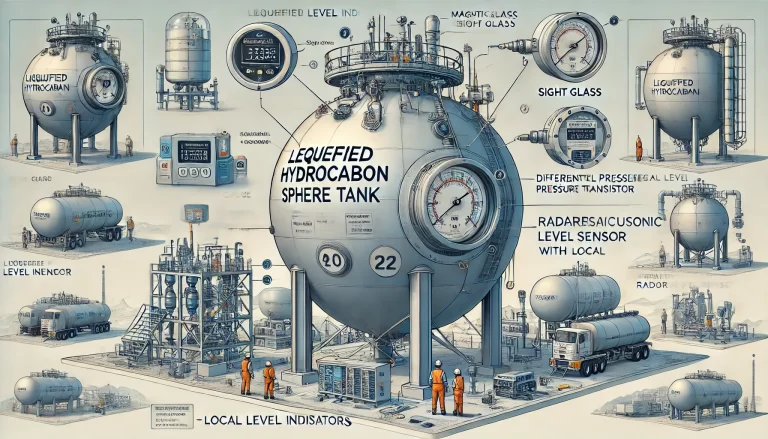
Types of Local Level Indicators for Liquefied Hydrocarbon Sphere Tanks
Several types of local level indicators are used in these storage tanks, depending on the operational requirements and safety standards.
1. Magnetic Level Gauges (Magnetic Flip Indicators)
Consist of a float with an internal magnet that moves along a graduated scale
Provide high visibility and real-time liquid level tracking
Suitable for high-pressure and hazardous fluid environments
Often combined with remote transmitters for integration with control systems
2. Sight Glass (Direct Visual Indicators)
Simple glass tube allowing direct observation of liquid level
Generally used in low-pressure applications or as a backup indicator
Not ideal for high-pressure or extreme temperature applications
3. Differential Pressure Level Transmitters
Uses the pressure difference between the tank’s bottom and top to calculate liquid level
Often combined with remote sensors but can have a local display
4. Radar and Ultrasonic Level Indicators with Local Display
Non-contact sensors that use electromagnetic or sound waves to measure liquid level
Can provide both local and remote readings
Suitable for corrosive and high-pressure environments
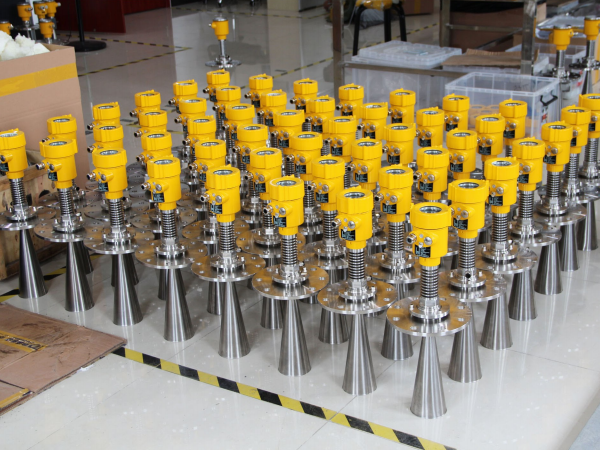
Best Practices for Installing Local Level Indicators
To maximize safety and efficiency, the following best practices should be observed when installing local level indicators:
Install at easily accessible locations for quick visual reference
Ensure compatibility with the stored hydrocarbon’s properties (temperature, pressure, and volatility)
Use explosion-proof or intrinsically safe designs in hazardous environments
Regularly calibrate and maintain indicators to prevent discrepancies
Integrate with remote systems for added redundancy
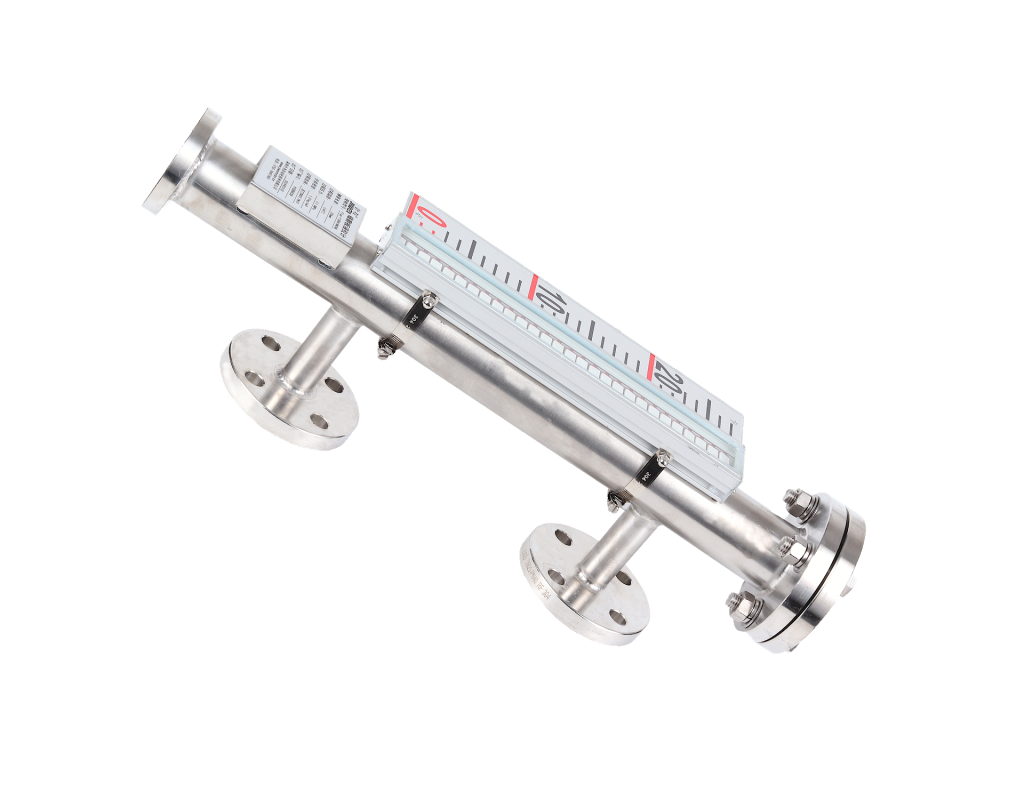
Conclusion
Local level indicators are indispensable in liquefied hydrocarbon sphere tanks due to their role in ensuring operational safety, regulatory compliance, and redundancy. While remote monitoring systems provide automation and real-time digital tracking, local indicators serve as crucial backups and enable immediate on-site verification. A well-implemented combination of modern sensors and traditional level indicators enhances the reliability and safety of hydrocarbon storage operations, ultimately mitigating risks and ensuring smooth industrial processes.
